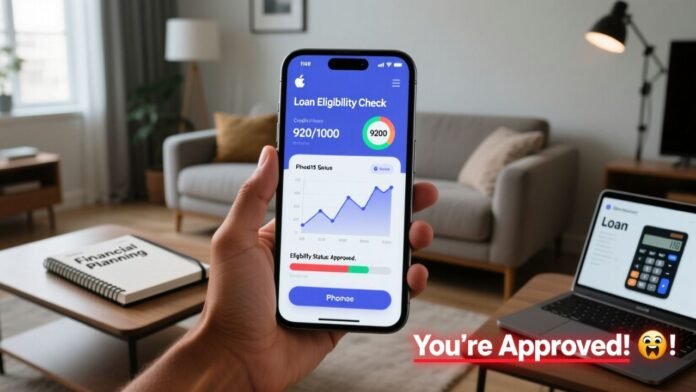Need a loan? Home, car, or personal – but banks don’t approve immediately. The most important thing is your banking history! If your account balance is correct, getting a loan becomes easier.
Today, we’ll explain in a simple way how to determine your loan eligibility by looking at your banking history – without the hassle of an app or website!
How To Check Loan Eligibility Using Banking History
Step 1: Download Your Bank Statement
First, open your bank’s app or net banking. Download your bank statements for the last 6-12 months. These can be found in PDF or Excel. It will show all your transactions – salary credit, EMI payments, shopping, UPI, everything!
Tip: If your salary comes on the same date every month, it builds trust with the bank.
Step 2: Check These 5 Things
Open your statement and look at these 5 things:
Salary Credit: How much money did you receive each month? If you’ve been receiving a regular salary for 3-6 months, it’s a strong point for a loan.
EMI or Bill Payment: Did you pay any old loan or credit card bills on time? If yes, a good repayment history increases your chances of getting a loan.
Bounces and Negative Balance: Did your cheque bounce? Did your account balance drop to -5? This is a red flag. The bank thinks, “You can’t manage your money!”
Large Shopping or Withdrawals: Withdraw 50-60% of your salary in one go? Or did you spend the money on gambling sites? The bank gets suspicious.
Savings Pattern: Do you save a little money every month? Or does it all go waste? If you are saving, the bank gains confidence.
Step 3: Guess your CIBIL Score
CIBIL scores range from 300-900. If it’s 750+, you can easily get a loan. You can estimate this yourself from your banking history:
| Credit History | CIBIL Score (Guess) |
|---|---|
| Regular salary + EMIs on time | 750-850 |
| Occasional bounces, but salary is regular | 650-750 |
| More bounces, no savings | 550-650 |
Pro Tip: If you haven’t bounced in 6 months and your EMIs are on time, there’s a 90% chance your score is 720+!
Step 4: Decide on the Loan Amount
The bank gives you a loan up to 3-5x your monthly salary. Example:
| Salary | Loan Up To |
|---|---|
| ₹30,000 | ₹90,000 – ₹1.5 lakh (personal loan) |
If your statement also shows savings, the bank may lend a little more.
Step 5: How to Impress the Bank?
- Turn on EMI auto-debit – the bank knows, but you don’t forget.
- Create an FD or RD – you show security.
- Turn off unnecessary UPI – stay away from gambling and betting sites!
Bonus: Check CIBIL for Free
You get a free CIBIL report once a year. Visit the official website: cibil.com, log in with your PAN and mobile number. You’ll see your exact score there!
| What to Check | What to Look for |
|---|---|
| Salary Credit | On the same date every month? |
| EMI/Bill Payment | Paid on time? |
| Bounces | How many in 6 months? |
| Big Withdrawals | 50%+ salary in one go? |
| Savings | Save every month? |
Pros and Cons
Pros:
- You can determine your loan chances from your banking history from home.
- You can create a plan to improve your CIBIL.
- Bankers will be impressed if your history is clean.
Cons:
- Old errors (bounces) remain in your records for up to 7 years.
- This is just an estimate – you’ll need to check your CIBIL for an exact score.
- If you don’t save, you’ll receive a lower loan amount.
Conclusion
Consider your banking history a report card! If you’re paying your bills on time, receiving your salary regularly, and saving money, then there’s no problem getting a loan. Check your statement, keep it accurate for six months, and the bank will say, “Loan approved!”










